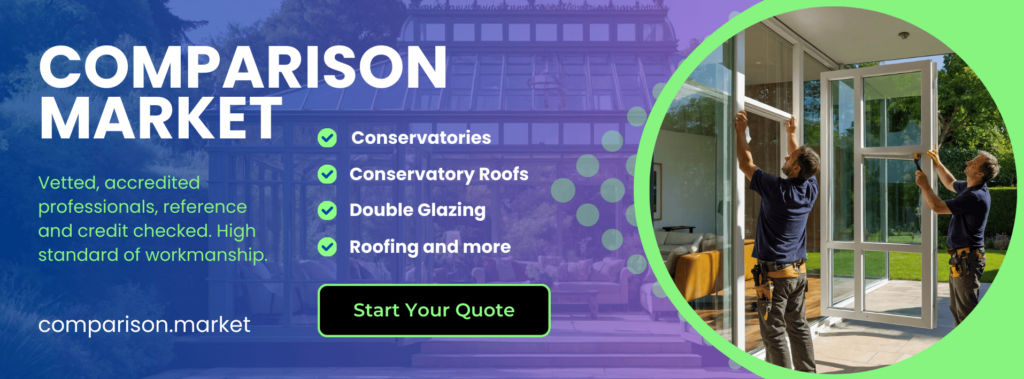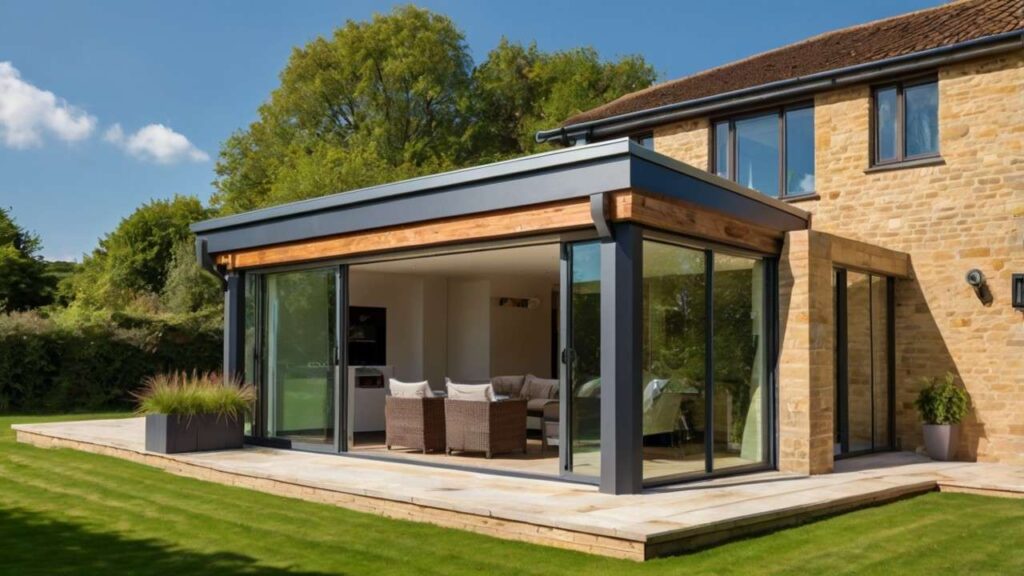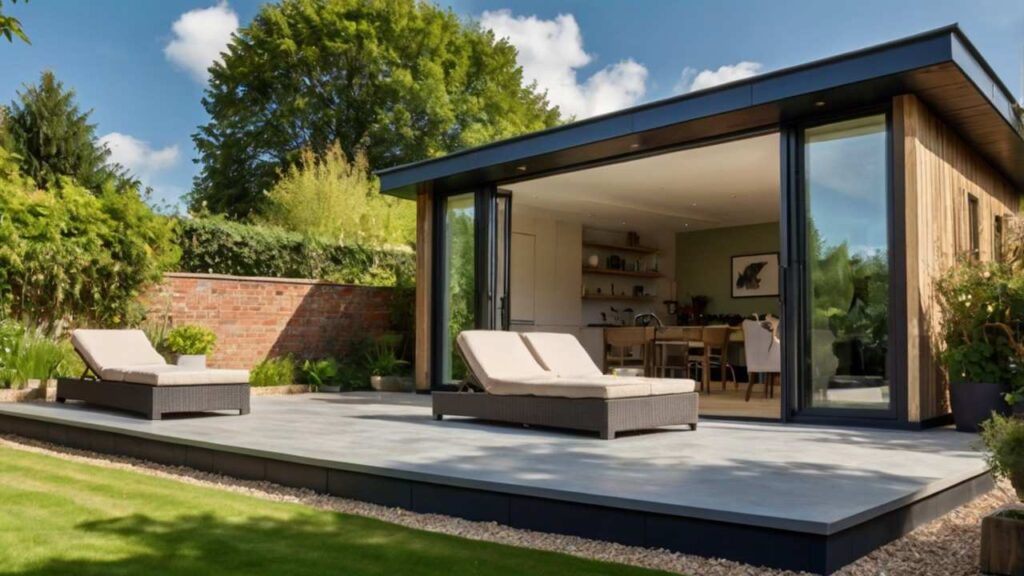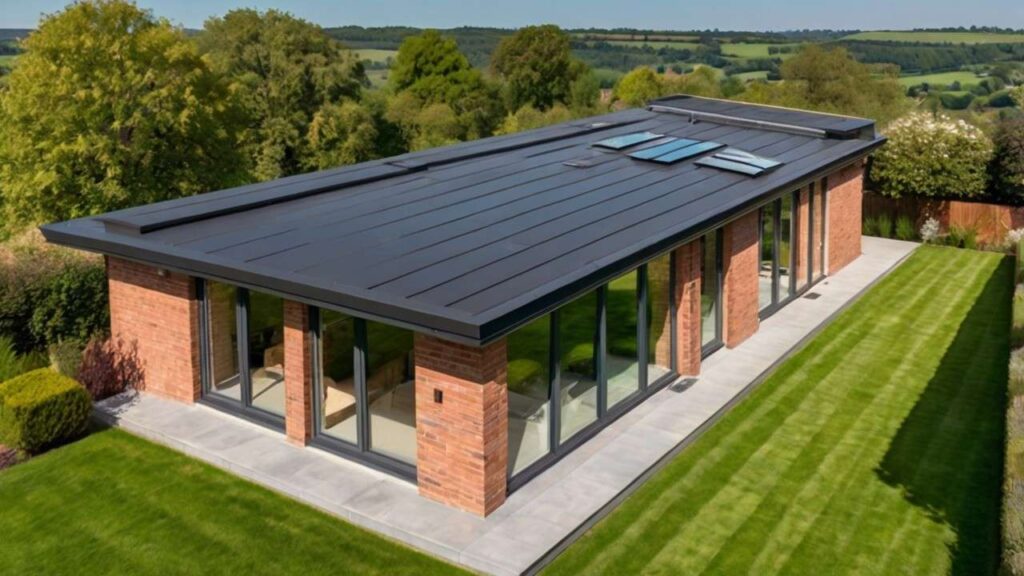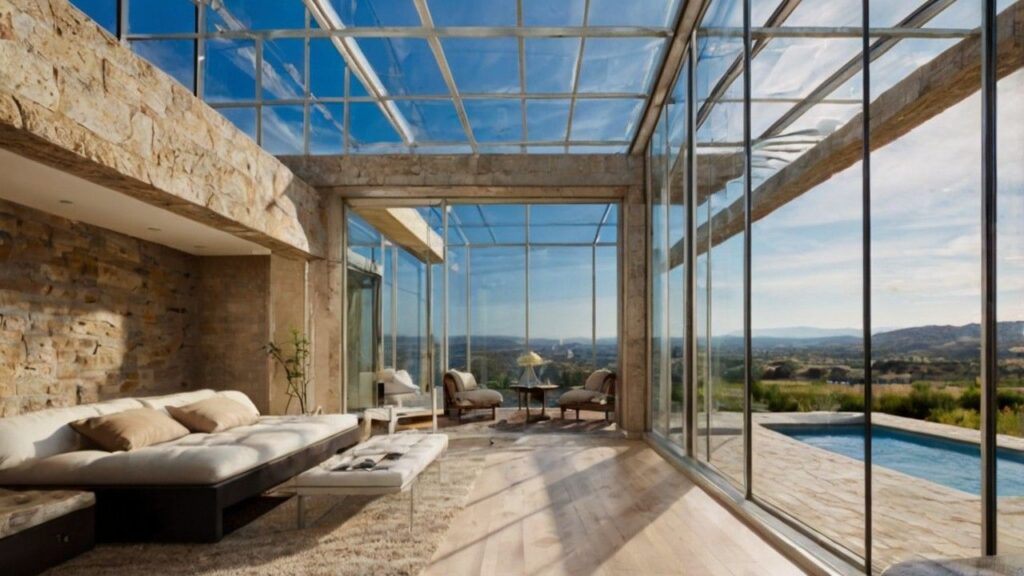Flat Roof Extensions: 10 Key Pros and Cons for UK Homes Revealed
Summary: Flat roof extensions are a modern way to add space to your home. They can increase your home’s value too. These extensions are flexible in design and can have green roofs. They’re often easier to maintain than other types. But they can have water pooling issues and need regular care. They might not last as long as pitched roofs. Cheaper options like felt exist. But, pricier materials like EPDM or GRP work better. Flat roofs are popular in the UK for their modern look and space-saving design. But you need to think about weather, building rules, and long-term care before choosing one. This guide will help you weigh all these factors to make the best choice for your home.
Imagine having more living space that connects your home to your garden. Picture rooms filled with natural light and a modern look. This is what a flat roof extension can offer. But before you start planning, it’s crucial to understand the ups and downs. Flat roof extensions are becoming popular in the UK. They can turn ordinary homes into modern spaces. But like any big home change, they have good and bad points. Today, we’ll share 10 important things you should know about flat roof extensions.
We’ll cover cheap options, fancy designs, upkeep worries, and building rules. We’ll look at how flat roofs can save energy and add value to your home. But we’ll also talk about potential problems, like leaks and shorter lifespans.
Every home is different, and what works for one might not work for another. That’s why we’ll explore different materials and designs. We’ll help you understand what might work best for your home and budget. Grab a drink, get comfy, and let’s explore flat roof extensions together. By the end, you’ll be ready to make an informed choice about your home improvement project.
Why Should You Listen to Us?
Our UK-based team helped over 1M homeowners save up to 40% on home improvement quotes since 2006. By using our free no-obligation quote comparison service, you will receive the most competitive quotes from vetted and accredited local companies.
1. Pro: Cost-Effective
Flat roof extensions can save you money. They often cost less than extensions with sloped roofs. This is because they use fewer materials and take less time to build.
The cheapest option is felt roofing. It’s been used for many years. Many people choose it because it’s affordable. But it might not last as long as other materials. A mid-range choice is EPDM rubber roofing. It costs more than felt, but it lasts longer. It is also easier to repair if it gets damaged.
The most expensive is GRP or fibreglass roofing. It’s great at keeping water out and lasts a long time. Many people think it’s worth the extra cost.
Here are rough costs per square metre:
- Felt roofing: £40–£70
- EPDM rubber: £80–£100
- GRP fibreglass: £90–£150
Pricier materials often save money over time. They last longer and need less fixing. When choosing, think about how long you plan to stay in your home. If you’re staying for a long time, spending more now might save money later.
2. Con: Water Pooling Risk
Flat roofs can have problems with water pooling. Unlike sloped roofs, they don’t naturally drain water. This means they need careful design to avoid water buildup. Water pooling can cause several issues. It can lead to more chances of leaks. Over time, standing water can damage the roof material. This can make the roof wear out faster.
Water pooling also adds extra weight to the roof. In severe cases, this could damage the roof structure. Lastly, damp conditions can lead to mould growth. This is bad for the roof and your health.
To fix this, modern flat roofs have a slight slope. This helps water flow to drains. It’s usually a small slope that you can’t see. Regular checks are important to keep drains clear and working.
Even with good design, flat roofs need more attention than sloped roofs. You’ll need to check for water after heavy rain. If you see puddles that don’t drain, you might need professional help.
Thoroughly Vetted Professionals
Every supplier in our network goes through a strict vetting process, including credit checks and accreditation verification.
3. Pro: Makes the Most of Space
Flat roof extensions are great for using all your space. Inside, you can use every inch from wall to wall. There are no sloping ceilings to work around. This is really helpful in cities where space is tight.
With a flat roof, you can have taller walls and bigger windows. This lets in more light and makes rooms feel bigger. You can fit more furniture and storage in too.
Outside, flat roofs offer extra usable space. You can turn them into:
- Roof gardens
- Outdoor living areas
- Places for solar panels
This makes flat roofs very popular in the UK. People like that they can create both indoor and outdoor living spaces. In small city homes, a flat roof can add valuable outdoor space.
Some people use their flat roof as a balcony or terrace. Others create green roofs with plants. This can look nice and help save energy. It’s like adding an extra room to your home, but outdoors.
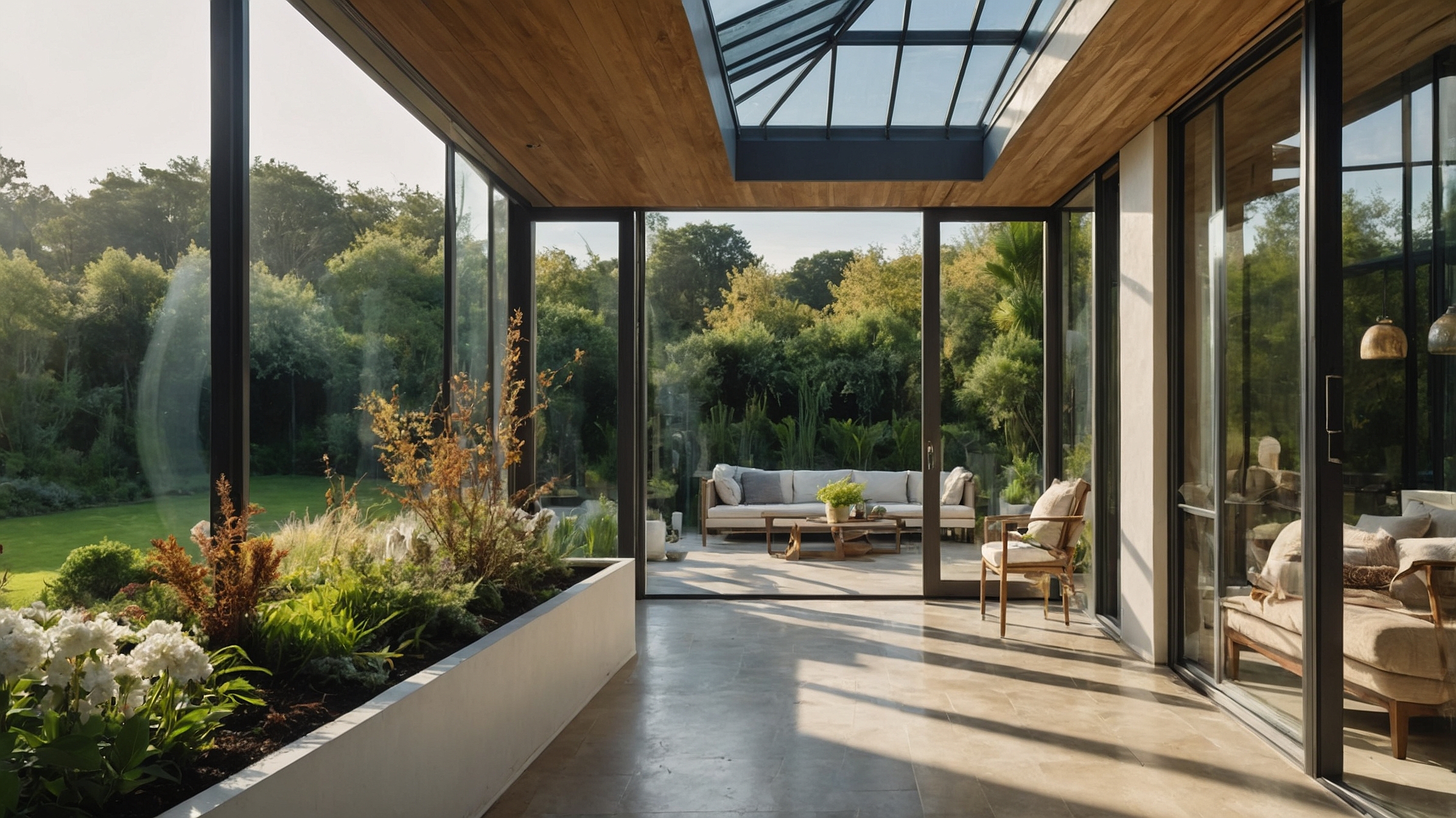
4. Con: Shorter Lifespan
Flat roofs usually don’t last as long as sloped roofs. How long they last depends on the material:
- Felt roofing: 10-15 years
- EPDM rubber: 20-30 years
- GRP fibreglass: 25-30+ years
A well-kept sloped roof can last 50 years or more. This means you might need to replace or fix a flat roof more often.
The shorter life of flat roofs is partly due to water exposure. Even with good drainage, they face more water than sloped roofs. Sun and heat can also damage flat roofs over time.
To make your flat roof last longer, you need regular care. This means checking it often and fixing small problems quickly. Good care can add years to your roof’s life.
Remember to factor in replacement costs when planning your budget. A cheaper roof now might mean more costs later. Think about how long you want the roof to last when choosing materials.
Accredited Professionals, thoroughly vetted through reference and credit checks. Registered with self-certification schemes, guaranteeing high standards of workmanship.
5. Pro: Flexible Design
Flat roof extensions offer lots of design options. They can blend in with old houses or stand out as modern additions. They work well with many styles.
Inside, flat roofs allow for:
- Big windows or sliding doors
- Skylights for more natural light
- Clear views in all directions
You can create open-plan spaces that feel bright and airy. Many people use flat roof extensions for kitchen-diners or living rooms. The flat ceiling makes it easy to add spotlights or hanging lights. Outside, flat roofs can look very sleek and modern. They give homes a clean, simple line. This can make even old houses look more up-to-date.
In the UK, people like using flat roofs to create open living spaces. These spaces can connect the inside of the home to the garden. It’s great for parties or just enjoying good weather. You can also use different materials on the outside of your extension. This lets you match your house or create a contrast. It’s a chance to be creative with your home’s look.
6. Con: Needs Regular Care
All roofs need care, but flat roof extensions often need more attention. Regular tasks include:
- Clearing leaves and debris
- Checking for and fixing cracks
- Making sure seals are watertight
- Reapplying protective coatings
How often you do this depends on the roof material. Felt roofs need the most care. GRP or EPDM needs less. Ignoring these tasks can lead to bigger problems later.
You should check your flat roof at least twice a year. Spring and autumn are good times. Also, check after big storms or heavy snow. Look for any signs of damage or wear. If you’re not comfortable doing this yourself, you can hire professionals. They can do thorough checks and fix any problems. This might cost money, but it can save you from bigger repair bills later.
Remember, good care is key to making your flat roof last. It’s better to spend a little time and money on care than a lot on big repairs.
Save Up to 40% on Your Project
Focus on competitive pricing could save up to 40% and these savings might allow you to choose higher-quality materials or add extra features.
7. Pro: Energy Efficient
When built right, flat roof extensions can save energy. They have less space to heat or cool than extensions with high ceilings. This can help lower your energy bills.
Flat roof extensions are also good for:
- Putting up solar panels
- Making green roofs that insulate naturally
- Using coatings that reflect heat in summer
Solar panels work well on flat roofs. You can position them to catch the most sun. This is harder on sloped roofs. Green roofs add a layer of soil and plants. This acts like extra insulation. It keeps your home warmer in winter and cooler in summer. Green roofs also look nice and can help local wildlife.
Reflective coatings bounce back the sun’s heat. This keeps your home cooler in summer. It’s like putting sunscreen on your roof! These features can lower energy bills. They also fit with the UK’s push for greener homes. Many people like knowing that their house extension is good for the environment.
8. Con: Building Permission Challenges
Many flat roof extensions are allowed without special permission in the UK. But sometimes they face more questions from planning authorities. This is especially true in historic areas.
Possible issues include:
- Height limits (usually 4 metres for detached houses, 3 metres for others)
- Worries about how it looks next to other houses
- Rules about the extension’s size compared to the main house
Always check with your local planning office before starting. You might need to apply for full planning permission. This can take time and cost extra money.
In some areas, planners prefer traditional pitched roofs. You might need to show why a flat roof is better for your home. Sometimes, you might need to change your plans to get approval.
Don’t start building without checking the rules. If you build without permission, you might have to take the extension down. It’s always better to check first, even if it takes more time.
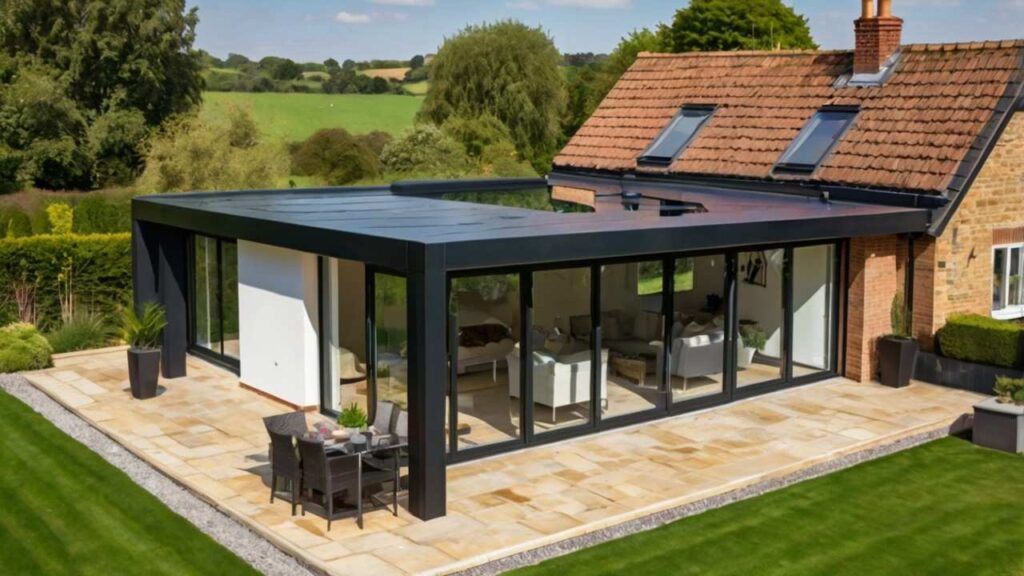
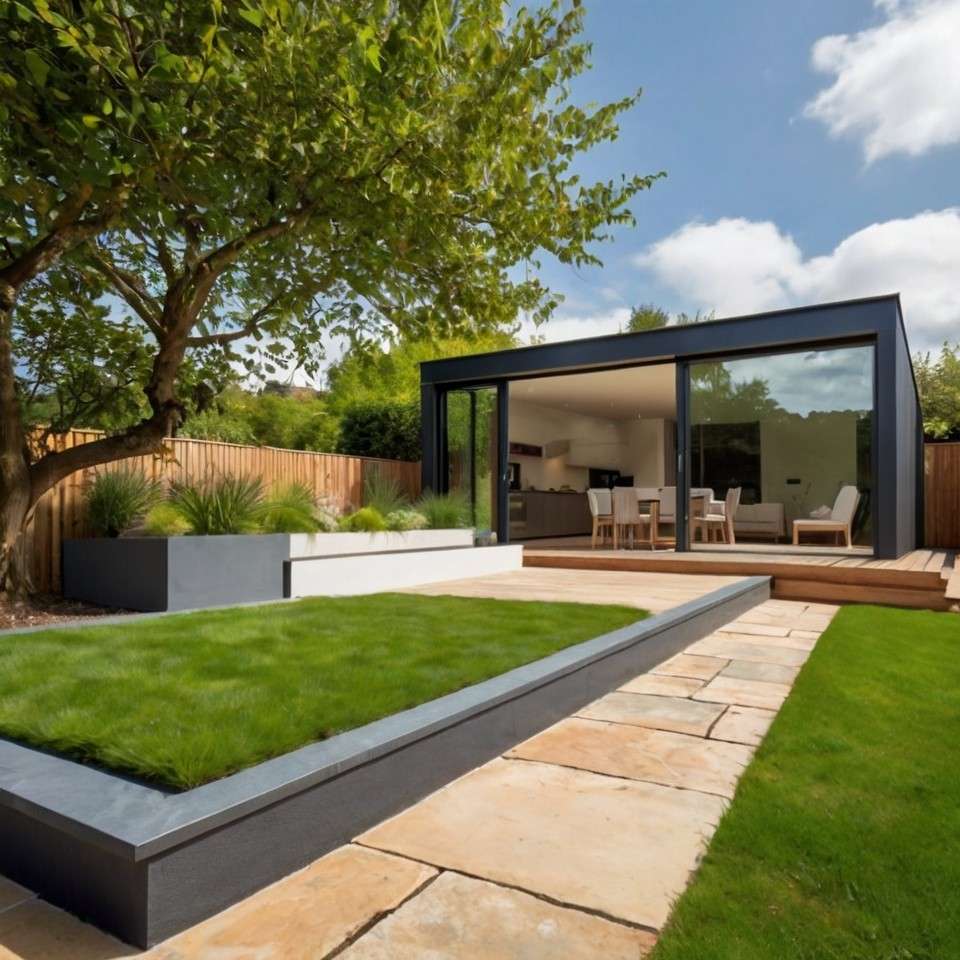
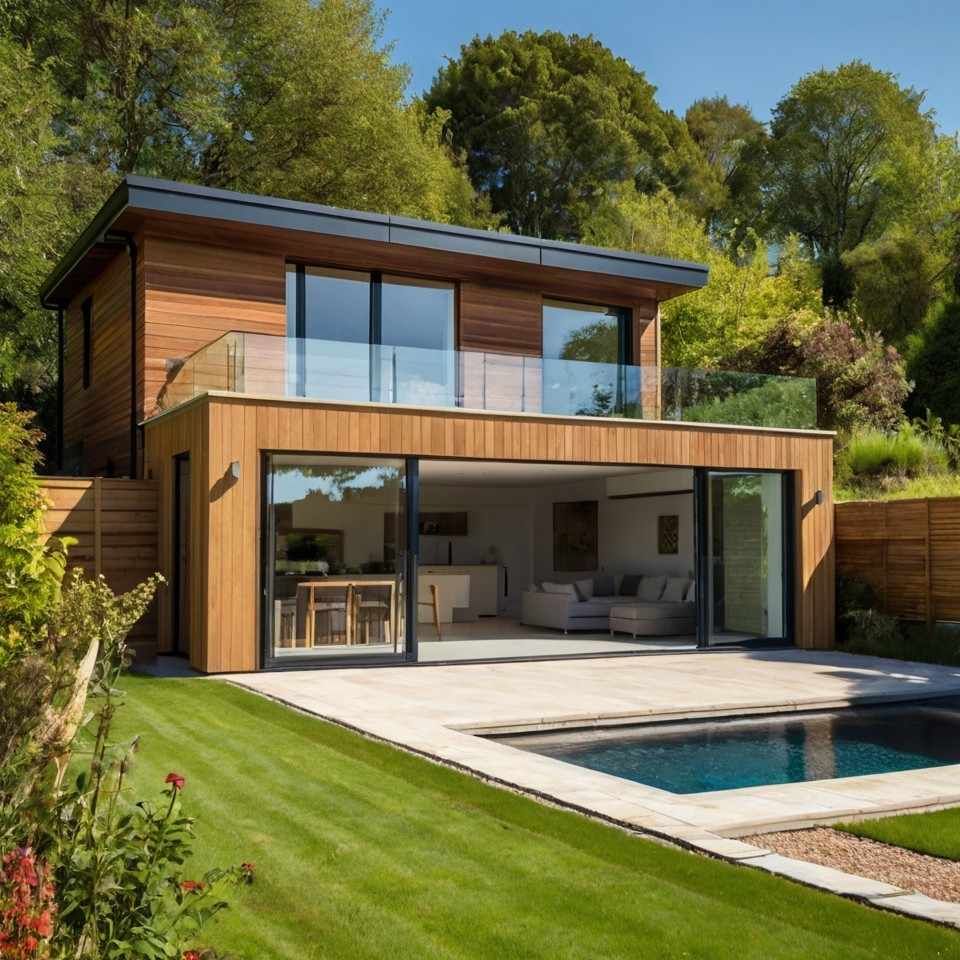
9. Pro: Easy Access for Upkeep
Flat roofs are easier to access for maintenance. This makes it safer to:
- Do regular checks and cleaning
- Install and fix roof equipment (like air conditioners)
- Add new features like skylights later on
You can walk on most flat roofs to do inspections. This is much safer than trying to check a sloped roof. It means you can spot problems early before they get big. If you want to add things to your roof later, it’s easier with a flat roof. You could add solar panels or a satellite dish without much trouble. On a sloped roof, this would be harder and more dangerous.
This easy access can save money on upkeep over time. It also lets you change your extension as your needs change. For example, you could add a skylight years after building the extension.
Remember, even though it’s easier to access, always be careful on your roof. If you’re not sure about doing something yourself, it’s best to contact a professional.
10. Con: Look Concerns
Many people like the modern look of flat roof extensions. But they might not suit every house or neighbourhood. In areas with lots of old houses, a flat roof might stand out too much.
Think about:
- How well it fits with your current house
- How it affects the look of your street
- If it might change your home’s value in areas that prefer traditional styles
In some historic areas, flat roofs might not be allowed. People might worry that modern extensions change the character of the neighbourhood. This can be a problem if you live in a conservation area.
But designers often use clever tricks to make flat roofs blend in. They might use matching materials or add details that fit with the old building. For example, they might use bricks that match your house on the walls of the extension.
If you’re worried about how it will look, talk to an architect. They can help design an extension that looks good with your home. Sometimes, a mix of flat and sloped roof sections can work well. Remember, the goal is to improve your home, not just add space. A good design will make your house look better, not just bigger.
Final Thoughts: Flat roof extensions offer both advantages and challenges for UK homeowners. They can add valuable space and a modern look to your home. They’re often cost-effective and energy-efficient. They must need regular maintenance. They may last less than pitched roofs.
Before deciding, consider:
- Your budget and long-term costs
- Local planning rules
- Your home’s style and neighbourhood
- Maintenance requirements
- Energy-saving options
Remember, good design and quality construction are key. A flat roof extension can greatly boost your home’s value and usefulness. But it needs careful planning. Choose a budget-friendly felt roof or a durable GRP system. Make sure it meets your needs and suits your home.
Weigh the pros and cons we’ve discussed. Consult experts and get quotes. Consider your long-term plans. This will help you make the best choice for your home improvement project.
What’s the cheapest material for a flat roof extension?
Felt roofing is usually the cheapest. It costs about £40-£70 per square metre. But it might need replacing sooner than other materials.
How long do flat roof extensions last?
It depends on the material. Felt roofs last 10-15 years. EPDM rubber lasts 20-30 years. GRP fibreglass can last 25-30 years or more if well maintained.
Are flat roof extensions more likely to leak than sloped roofs?
They can be, if not built well. Water can pool on flat roofs. But good design and regular care can prevent leaks.
Can I use my flat roof extension as an outdoor space?
Often, yes. Flat roofs can become gardens, terraces, or outdoor living areas. But check if your roof is strong enough first.
Do I need special permission for a flat roof extension in the UK?
Sometimes. Many flat roof extensions don’t need special permission. But there are rules about size and height. Always check with your local council first.
Are flat roof extensions good for saving energy?
Solid and tiled conservatory roofs are typically the most energy-efficient options due to their superior insulation properties.
What’s the most popular flat roof material in the UK?
EPDM rubber is becoming very popular. It lasts a long time and doesn’t need much care. It usually lasts 20 to 30 years.
How often should I check my flat roof extension?
Check it at least twice a year, in spring and fall. Also, check after big storms. Look for damage and make sure the drains are clear.
Can a flat roof extension make my home worth more?
Yes, it can. It adds living space, which often increases home value. But how much depends on the quality and how well it fits your home.
Do flat roof extensions work for all types of homes?
Flat roof extensions can work for many homes, but they look best on modern houses. For older homes, you might need a special design to make them look right. Some areas might prefer sloped roofs, especially in historic neighbourhoods.
UK-Based Support Team
Our knowledgeable, UK-based support team is familiar with local markets, regulations, and trends, so you’ll always get relevant and current advice.
Simply Fill in Your Details, and Receive Competitive Quotes from Accredited Companies Tailored to Your Project!
Our team brings almost two decades of expertise in the UK home improvements sector, giving you unique insights into its challenges and possibilities. Reaching out to us means tapping into a wealth of experience from home improvements experts who know the British market inside out.
All our suppliers are members of one or more consumer protection groups below.

We offer unparalleled market insights, a network of skilled professionals vetted, accredited and reference – credit checked who can handle projects of all sizes. Our knowledgeable UK-based team will ensure a smooth, informed experience from start to finish.
To send us your marketing and other service offers, please use the following email: offers@comparison.market
